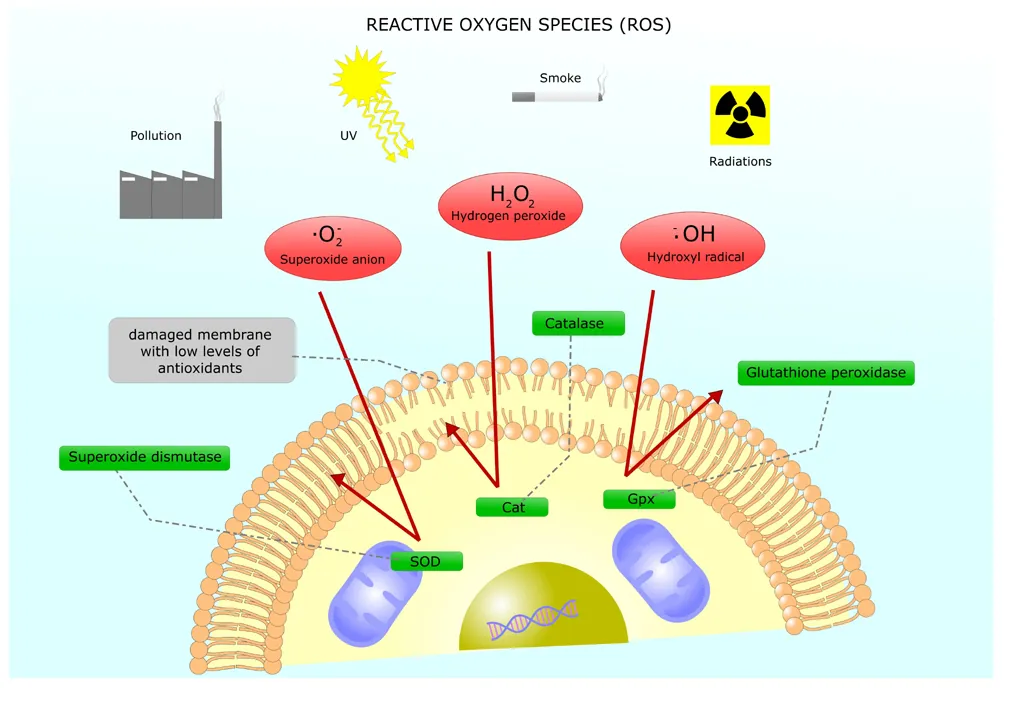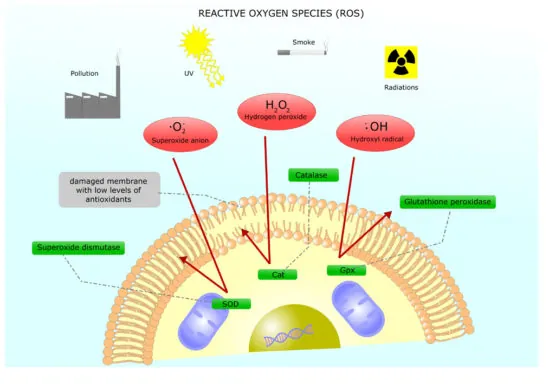According to scientists at the German Cancer Research Center (Deutsches Krebsforschungszentrum, or DKFZ), the enzyme TXNIP, which inhibits the enzyme TRX-1, might be a regulator of aging and might be a viable candidate for future interventions against age-related diseases [1].
Study summary
The “free radical theory of aging” suggests that reactive oxygen species (ROS) are responsible for age-related loss of cellular functions and, therefore, represent the main cause of aging. Redox regulation by thioredoxin-1 (TRX) plays a crucial role in responses to oxidative stress. We show that thioredoxin-interacting protein (TXNIP), a negative regulator of TRX, plays a major role in maintaining the redox status and, thereby, influences aging processes. This role of TXNIP is conserved from flies to humans. Age-dependent upregulation of TXNIP results in decreased stress resistance to oxidative challenge in primary human cells and in Drosophila. Experimental overexpression of TXNIP in flies shortens lifespan due to elevated oxidative DNA damage, whereas downregulation of TXNIP enhances oxidative stress resistance and extends lifespan.
Oxidative stress and aging
To understand the scope of this study and what attracted the researchers’ interest, it’s important to have a primer on oxidative stress, its involvement in aging, and the enzymes TRX-1 and TXNIP.
Reactive oxygen species (ROS) are part of a larger class of molecules known as free radicals, whose prominent feature is their high chemical reactivity. As a general rule, in order to be stable, atoms need to have their electrons paired up, and free radicals have at least one unpaired electron. As a consequence, they’ll tend to “steal” electrons from nearby molecules to achieve higher stability, damaging these molecules in the process. This kind of damage is called oxidative stress, and it tends to increase as a living organism ages.
The free-radical theory of aging, which states that aging is a consequence of oxidative stress build-up throughout the years, has been around since the 1950s. Indeed, oxidative stress does seem to play a role in aging; oxidative stress damages both mitochondrial and nuclear DNA, though more modern theories of aging—such as the Hallmarks of Aging [2]—encompass many other factors as well. Nothing is clear-cut in biology, and free radicals do have benefits as well, but over the long haul, oxidative stress may cause significant harm.
TRX-1 and TXNIP
Excess free radicals can be kept somewhat under control by the action of antioxidants; these are molecules that interfere in the oxidative reactions triggered by free radicals, possibly preventing damage. While the consumption of antioxidant supplements hasn’t been proven to do much for your health, oxidants and antioxidants coexist and interact in your body on a daily basis, with TRX-1 being one of the latter.
TRX-1, short for thioredoxin-1, is a known cellular antioxidant involved in DNA replication and repair; studies have shown that its action may protect against age-related diseases. TXNIP, on the other hand, works as an inhibitor of TRX-1; naturally, inhibiting TRX-1 also inhibits its antioxidant action, and more free radicals are thus free to roam the body.
The study
To account for the increased oxidative damage observed with age, DKFZ researchers wanted to see if levels of TXNIP also rise with age; in principle, more TXNIP should lead to more TRX-1 inhibition and thus more oxidative stress. The scientists tested their hypothesis in both human cells and in vivo in fruit flies.
For the human cell part of the study, they sampled T cells (part of the immune system) from the blood of one donor group aged 20-25 and another group aged over 55, and they observed that, indeed, the older subjects showed significantly increased levels of TXNIP; similar results were also observed in cells coming from different human tissues.
The rise in TXNIP production with age was also observed in fruit flies; to verify whether this had an effect on the lifespan of the insects, the researchers bred flies that produced much more TXNIP than normal as well as flies that produced much less of it. On average, the former kind lived much shorter lives than the latter, suggesting that TXNIP may be an important regulator of aging.
Conclusion
Humans are not fruit flies, and before the idea is thoroughly tested in people, we cannot say whether TXNIP regulation will have the same effects observed in this study. However, Prof. Peter Krammer, one of the lead authors of the study, observed that the human and fruit fly versions of TRX-1 and its antagonist TXNIP are very similar, thereby making it reasonable to think that they may also have very similar functions. Further studies will be required before we can tell whether TNXIP is an appropriate target for interventions against aging.
Literature
[1] Oberacker, T., Bajorat, J., Ziola, S., Schroeder, A., Röth, D., Kastl, L., … & Krammer, P. H. (2018). Enhanced expression of thioredoxin‐interacting‐protein regulates oxidative DNA damage and aging. FEBS letters.
[2] López-Otín, C., Blasco, M. A., Partridge, L., Serrano, M., & Kroemer, G. (2013). The hallmarks of aging. Cell, 153(6), 1194-1217.




